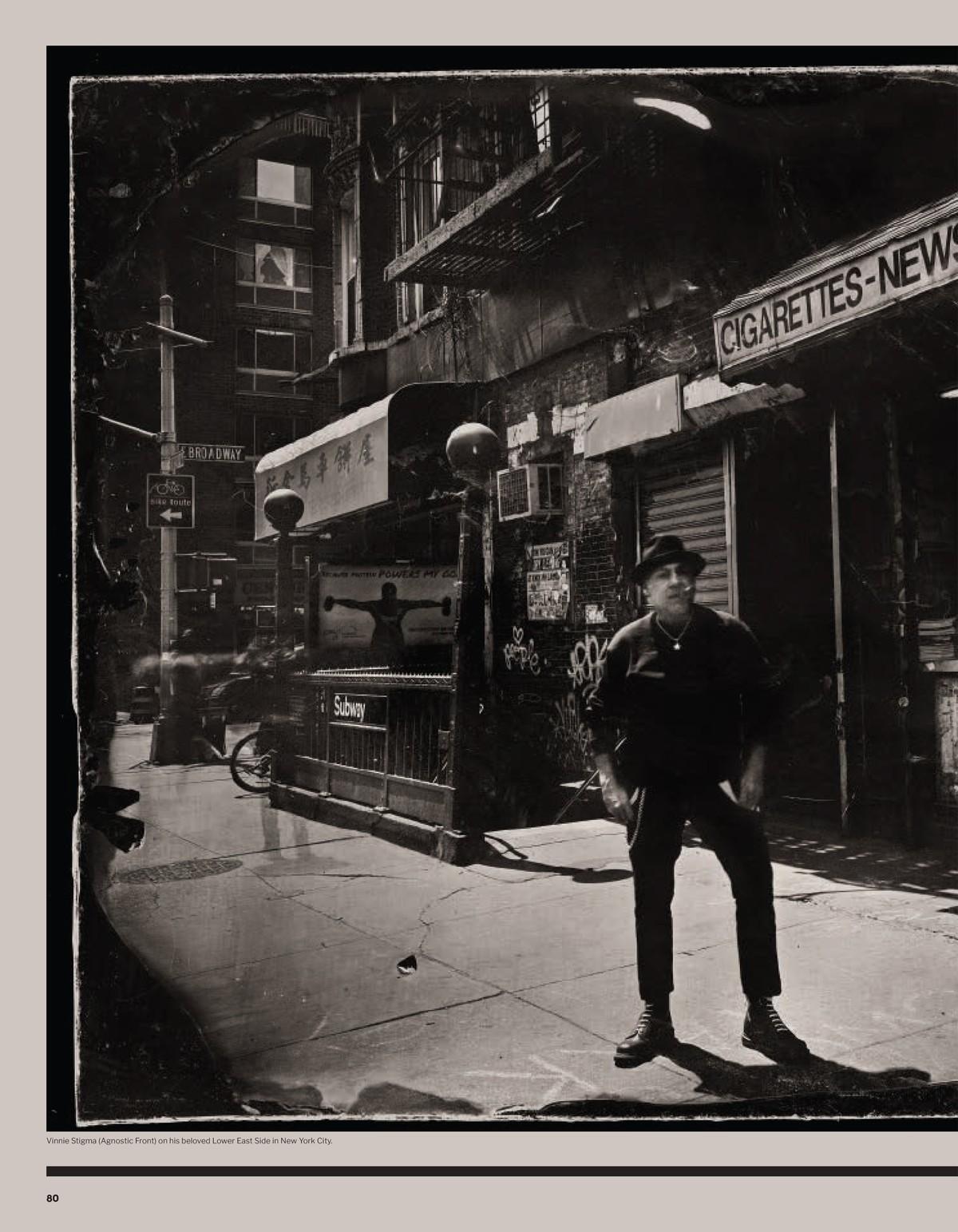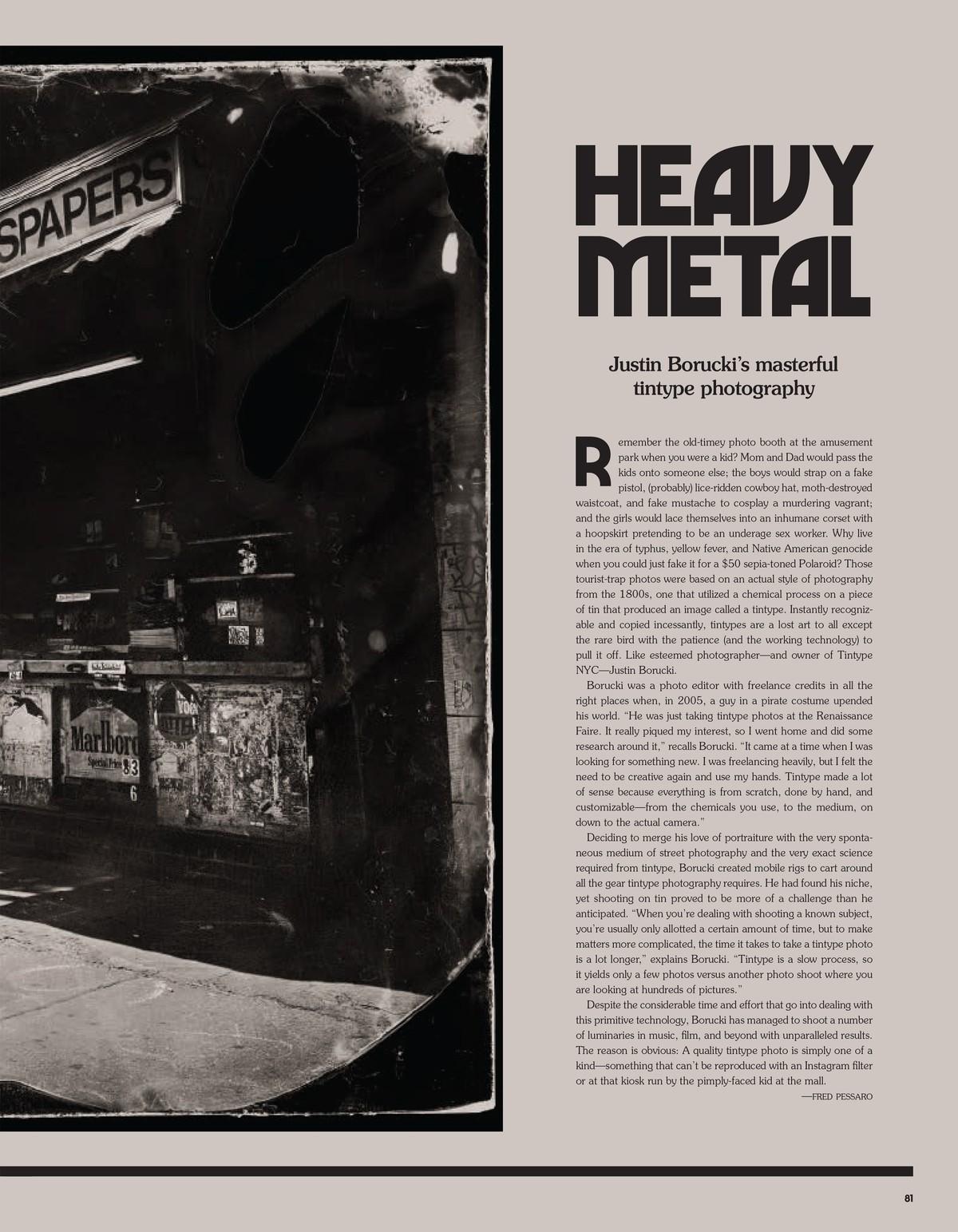HEAVY METAL
Justin Borucki’s masterful tintype photography.


Remember the old-timey photo booth at the amusement park when you were a kid? Mom and Dad would pass the kids onto someone else; the boys would strap on a fake pistol, (probably) lice-ridden cowboy hat, moth-destroyed waistcoat, and fake mustache to cosplay a murdering vagrant; and the girls would lace themselves into an inhumane corset with a hoopskirt pretending to be an underage sex worker. Why live in the era of typhus, yellow fever, and Native American genocide when you could just fake it for a $50 sepia-toned Polaroid? Those tourist-trap photos were based on an actual style of photography from the 1800s, one that utilized a chemical process on a piece of tin that produced an image called a tintype. Instantly recognizable and copied incessantly, tintypes are a lost art to all except the rare bird with the patience (and the working technology) to pull it off. Like esteemed photographer—and owner of Tintype NYC—Justin Borucki.

